For some nations, the national dish offers nothing more than hollow symbolism for the cuisine as a whole. For others, however, the national dish holds a far greater significance and lends a far deeper meaning to the overall national identity.
The country of Myanmar (formerly Burma) falls into this latter category. For a once proud nation ransacked by intergroup conflicts and civil war, just about anything that brings popular common consensus is a welcome reprieve.
The delightful dish of mohinga is one such reprieve.

Mohinga, Bygone Empires, Civil War and National Repair
Before going further in understanding Burma’s historical trajectory, it’s important to highlight how incredibly diverse the nation is. It’s more a collective of subset ethnic groups like the Rakhine, Tavoyan, Danu, Intha, etc. than it is a “Burman” nation. All told, there are more than 135 ethnic groups within the confines of Burma that maintain their own history, language and independent cultures from the rest.
This diversity over time has been both a blessing and a curse – more recently a curse – for the nation, but it’s nonetheless remained at the fabric of the nation as a whole.
The Rise of Burman Empires
Not meaning to whizz through thousands of years of human history, but that’s exactly what we’re about to do here.
Burma boasts some of the oldest artifacts and signs of prehistoric human life, especially in places like the ever fertile Irrawaddy Delta. As far as the archaeological evidence suggests, Burma has been inhabited by our ancestors as far back as ~13,000 years ago.
The first real semblance of a unified society, however, only begins with the Pyu. Coming into the Irrawaddy Delta in the 2nd century BC, the Pyu people quickly developed a formalized coalition of 18 unified Pyu states that would stand as a focal point in the region for the next two millennia. With an overland conjoining trade route between the major powers of India and China, the Pyu kingdom – also leveraging developments and innovations made domestically – became one of the most advanced societies in the region for its time.
Eventually, the Pyu kingdom collapsed as new peoples, particularly the Mranma, came down to settle in the region as well. On the heels of the Pyu came the pivotal Pagan Empire, which would serve as a dominant regional power for the next ~400 years. At its peak in the 12th century, the Pagan Empire, alongside the Khmer from modern day Cambodia, essentially ruled over incredibly large swathes of Southeast Asia. It was also during the time of the Pagans when Burmese eclipsed Pyu as the lingua franca for the region.
Between the fall of the Pagan Empire until the beginning of British colonial rule, other kingdoms bolstered the successes and advancements of the Burmese society. The Shan states were effective in reunifying previously fractured states and restoring the region to its previously dominant position, while the Toungoo Dynasty was one of the most peaceful, most literate and most sophisticated states of its time.
It was the arrival of the British in the 19th century, however, that completely altered the trajectory.
British Colonial Rule
By the 19th century, it was now the Konbaung Dynasty that had reunified and ruled the Burmese lands. Under King Bodawpaya, the Konbaung launched a series of military expeditions to expand westward in the direction of British-controlled India, a move that ultimately proved catastrophic for the lands.
What started as a series of British-provoked border revolts between the Indians and Burmese would ultimately lead to a series of Anglo-Burmese wars. Over the next 60 years, the Konbaung Kingdom and the British engaged in three long costly wars that ultimately led to a Konbaung exit and the beginning of British colonial rule.
The entry of the British from 1885 onwards had profound effects on Burma and the overall economy, both for better and for worse. Corresponding to the opening of the Suez Canal, suddenly the demand for Burmese rice – its chief crop and most lucrative export – skyrocketed and sent the economy climbing higher than ever.
This massive growth came with a dangerous cost, however. In order to match supply to demand, the British repossessed and redistributed lands intended solely for rice cultivation. The farmers allowed back onto these lands suddenly faced high investment costs needed to prepare the land for cultivation, and many were forced to resort to deal with Indian moneylenders with predatorily high interest rates that diminished their personal profitability.
So while the overall Burmese economy grew faster than ever before, the local and indigenous populations were, for the most part, left out of the fun.
Freedom… and then Civil War
By the early 1920s, the new generation of Burmese had grown dissatisfied with the growing disparity between the British and the local people. What began as a series of peaceful protests on university campuses would eventually evolve over the course of 27 years to a bloodied and difficult journey towards the creation of an independent Burmese state.
Honestly, this period of Burmese history might be the most interesting of all – and the chief architect of the modern nation, Aung San, the most interesting man – but a full discussion of it would have to get its own post. Don’t worry… this is definitely something that we will cover eventually.
Burma’s entry into independent statehood, however, began (and really has remained) incredibly rocky. Six months before independence took effect, Aung San was assassinated, and the nation fell into a power vacuum with various new parties – mostly Communist – springing up left and right.
It took the country over a decade and a ton of foreign aid to recover economically, but its peak political instability was still on the horizon. By 1962, all the political infighting… and separatist movements… and secessionist claims all culminated in the country falling into a really, really prolonged period of civil war.
For a region with such a decorated and rich historical narrative, the past 50 years – between civil war and oppressive military rule after 1989 – have been nothing but a tragedy. What was once a regional economic powerhouse has been reduced to economic rubble, a point emphasized when Burma officially recognized itself as one of the Least Developed Nations as determined by the UN.
Unfortunately, this period of turmoil has had profound effects in every part of Burmese life… its cuisine included.
Burmese Cuisine: Old and New
Traditionally, Burmese cuisine has drawn from strong influences from some pretty powerful regional neighbors: the Indian, the Chinese and the Thai. What results is an oddly eclectic cuisine wherein you can have curries (Indian) seasoned with fish sauce (Thai) but still containing copious amounts of oil (Chinese). Interestingly, the intersection of these three influences along with domestic contributions makes for a relatively mild though still highly complex flavor it Burmese dishes.
Of course, rice is at the forefront of the cuisine, although it is at least accompanied by at least a soup, a curry, some sort of protein (meat, fish, seafood or eggs) or both wild and cultivated vegetables. Generally, though, a meal will include more than several of these components all together.
Unfortunately, the cultural repression and overall political instability over the last half century has left little room for the Burmese cuisine to progress and to spread. For example, while Thai cuisine has become massively popular and widespread around the world (an initiative actively supported by the Thai government), the Burmese cuisine has floundered under its oppressive regime and, in a way, maybe even regressed.
Still, as the nation begins to open up, it is exquisite dishes like mohinga that will help spread the word about the magic of this simple yet sophisticated cuisine.
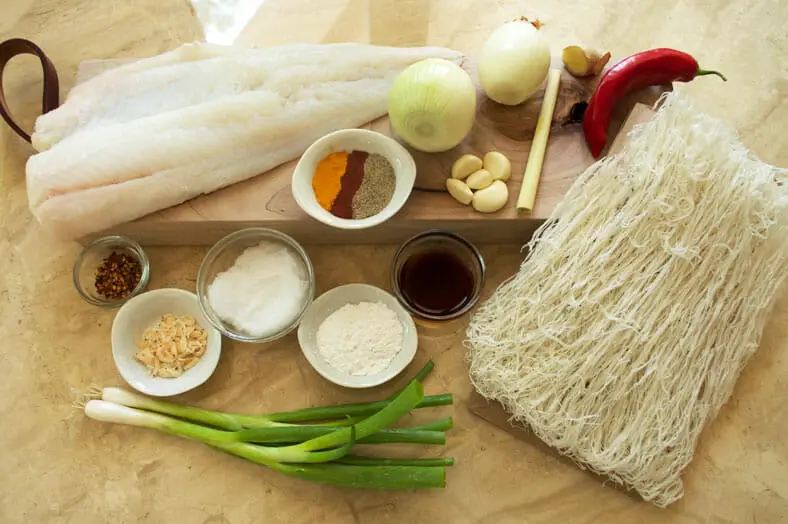
About the Recipe
Mohinga is quite a dish like we have rarely seen before. While technically a breakfast dish (and what a delightful breakfast it would make!), it is a dish that can be enjoyed at any part of the day. If you’re craving for some mohinga in the middle of the afternoon in downtown Yangon, chances are good you’ll quickly find a street vendor to serve you a fresh batch.
The core of the mohinga recipe comes from one place: the broth. Really, it begins and ends with the broth. And while it might differ from region to region, most versions of mohinga will make a heavily fish-based broth into which a whole slew of ingredients will go.
You start creating the broth base by “dry frying” a fragrant ingredient like lemongrass. Once fragrant, you add in a layer of water that is brought to a boil.
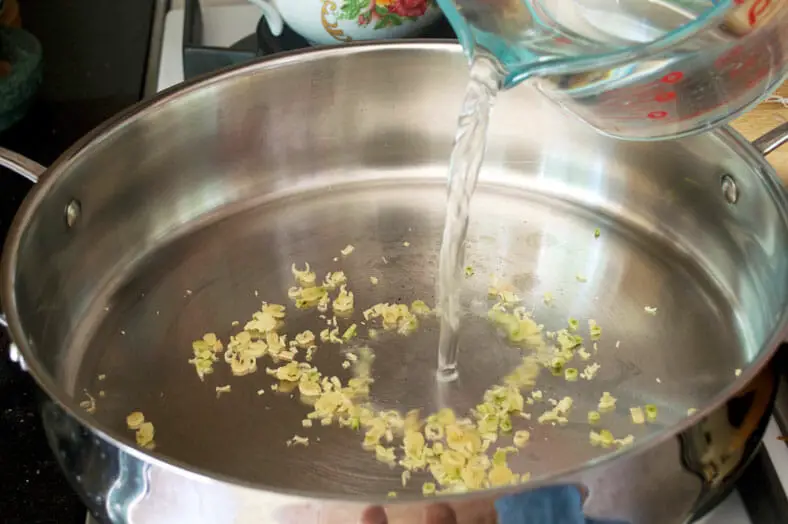
When boiling, you’ll place in either a fishcake or fish filet that will preliminarily cook and poach in the water. This poaching serves two purposes: to flavor the broth, and to pre-cook the fish. After several minutes of poaching, you’ll remove the fish, strain your mohinga’s broth and set everything aside.
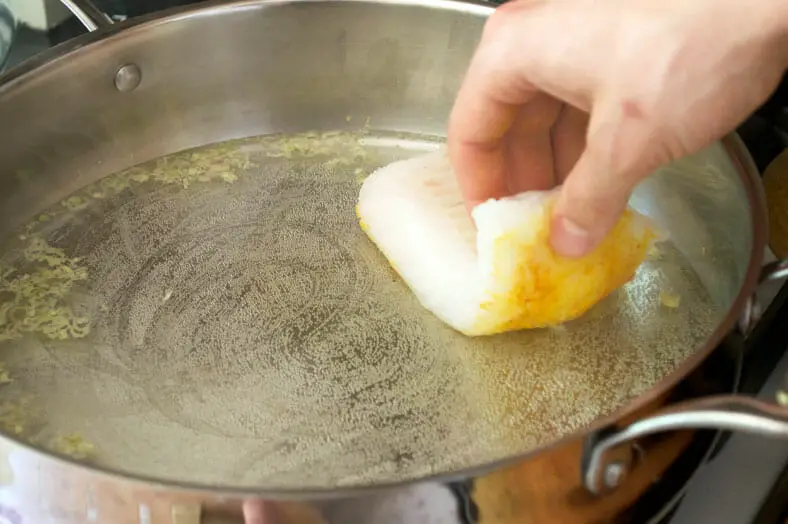
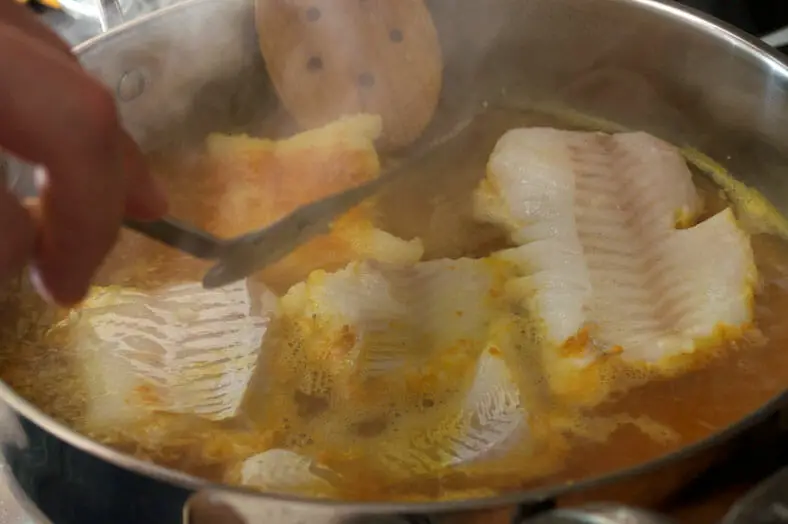
One of the true beauties about mohinga is its versatility and flexibility as a recipe. It gained major popularity among the Burmese in the late 19th century because it offered a cheap, flexible yet still highly nutritious meal for the growing impoverished. As such, there are no real “set rules” as to what can or can’t go into mohinga, although there are a few guidelines.
For one, you can never go wrong with including garlic, onions, lemongrass or ginger into your mohinga. Several recipes nowadays suggest blending and processing these ingredients into a fragrant paste, which you’ll see is what we used as the base for the rest of our cooking. Also very common to add into mohinga are either a shrimp or fish paste as well as toasted rice flour, all of which do wonders for adding deeper flavor to the dish.
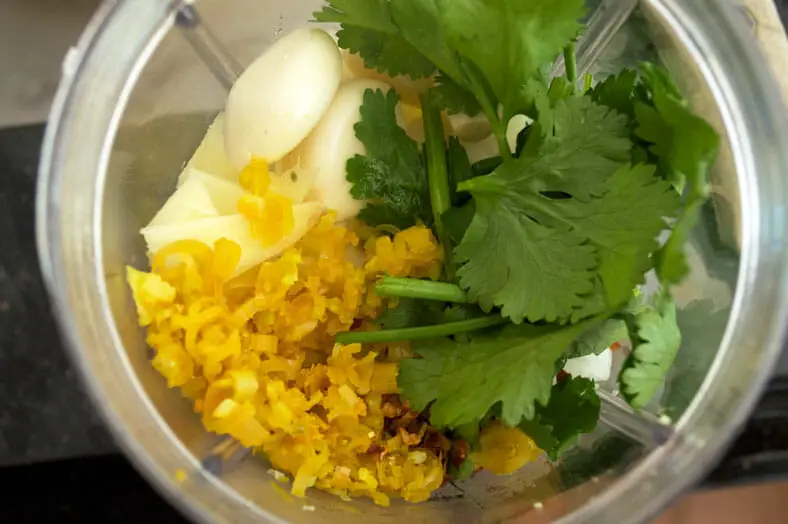
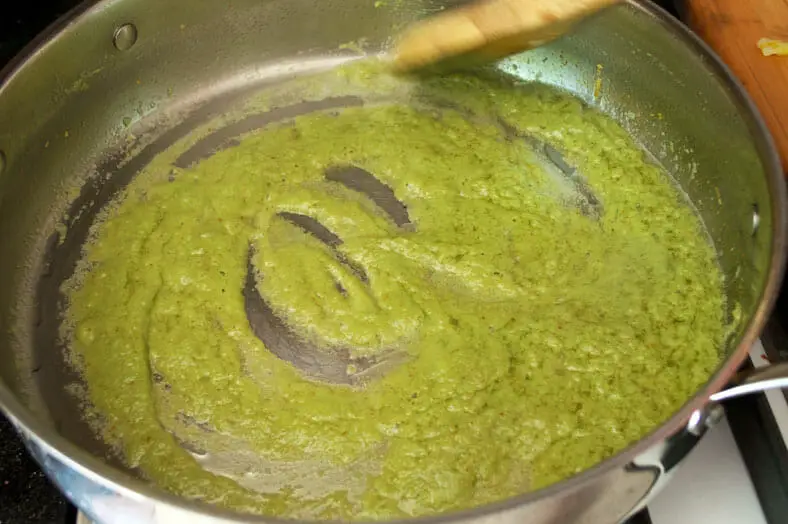

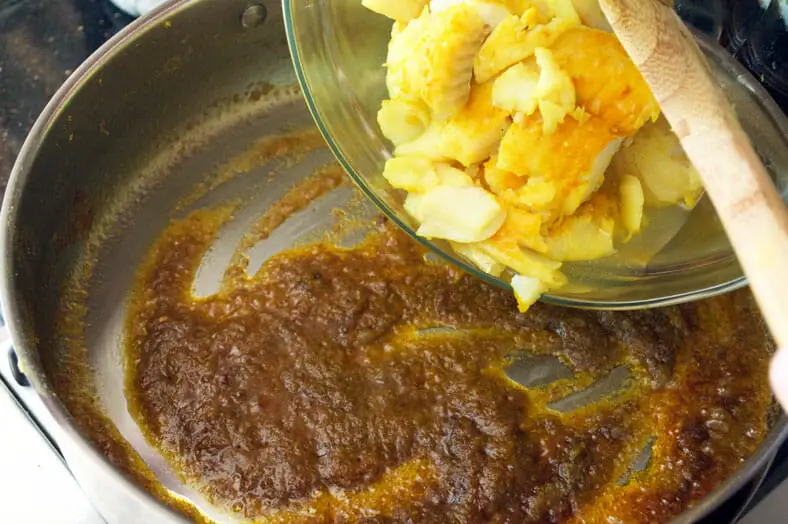
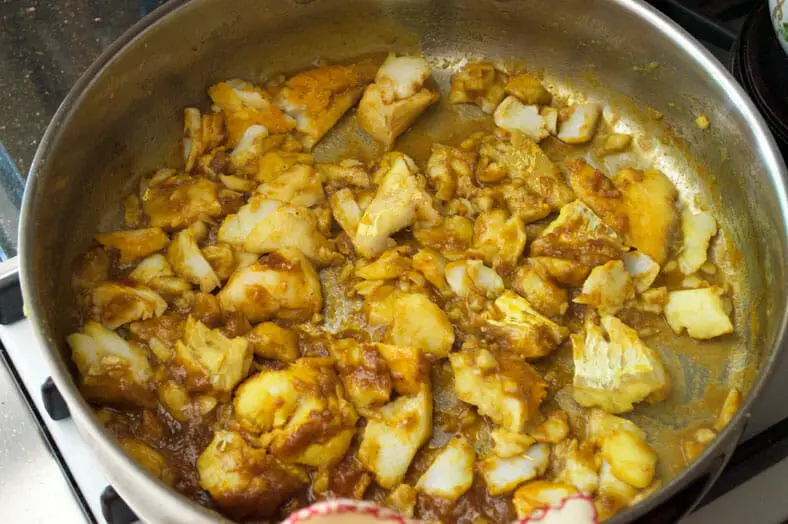

Once your pastes have been added and cooked together, you re-introduce the fish broth and the fish, and everything will simmer together to allow the flavors to meld. It is suggested to let the mohinga simmer for at least several hours to allow the flavors to marry to their greatest potential, but even a 20 minute simmer will give you enough of the flavor profile.
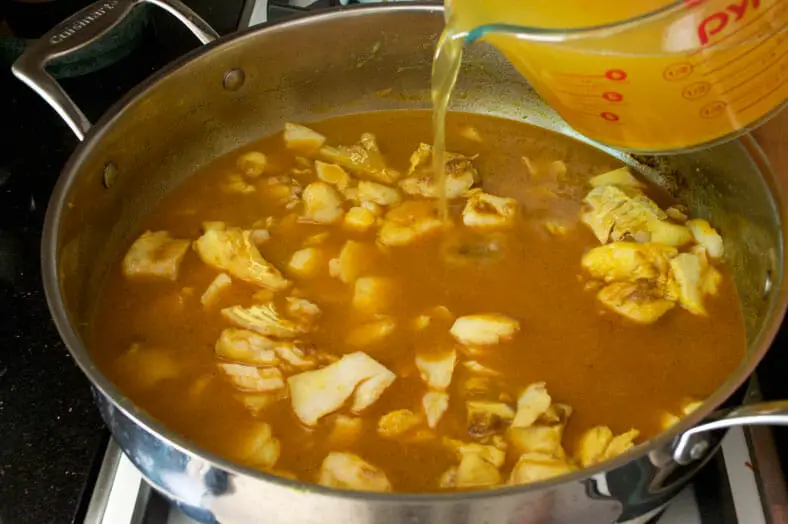
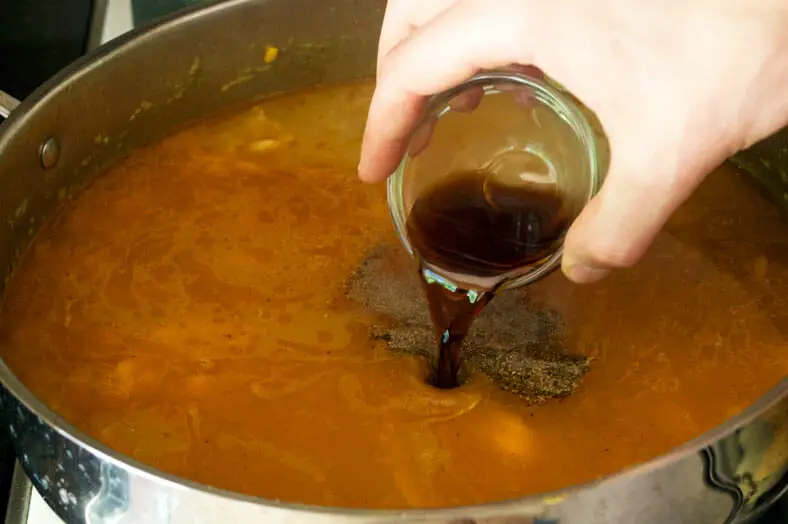
As the mohinga simmers, you can begin to add even more ingredients into the dish completely as you like. Some recipes will offer suggestions for chickpea fritters, fish cakes, lentils, boiled eggs, banana stems and so much more. At this point, you have a whole world of choice in terms of what to include.
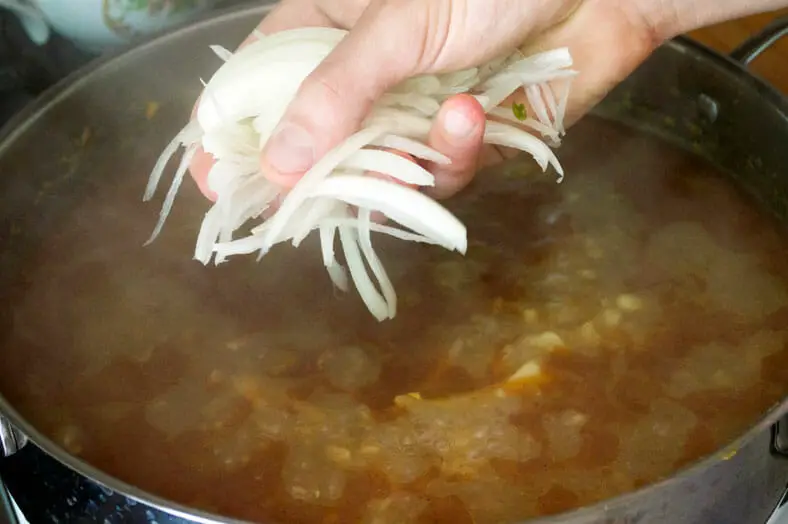
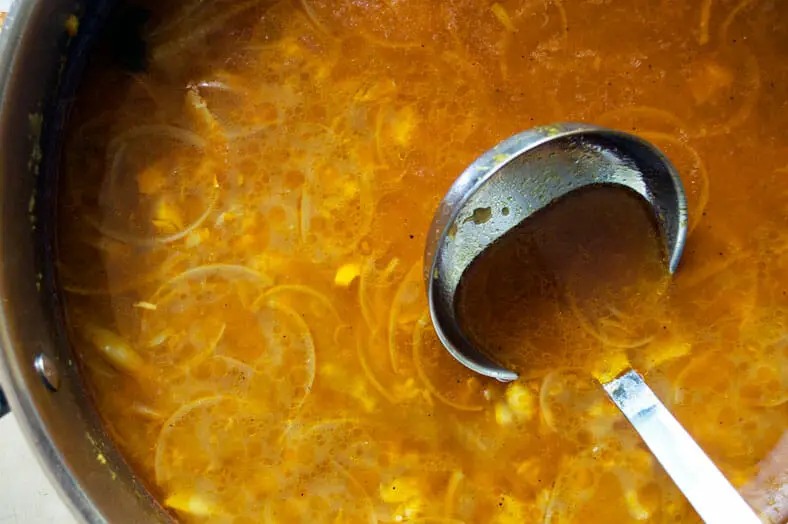
Towards the end of cooking, you should add in rice noodles to quickly cook, and then it’s ready to serve!

Our Take on the Recipe
With so many different variations of mohinga (and relatively poor transcriptions of quite a few recipes), it was quite a daunting task to come into a recipe that we’d think worthy as our original reference. Eventually, however, we did find a delicious mohinga recipe from Burmese-British cook Debbie Riehl that fit the bill.
Drawing on other recipes as well as our own ingredient preferences, we did end up making a few changes to our own version.
To start, we went with a different white meat fish for our mohinga. Traditionally, you’ll use nga gyi, a special Burmese river catfish, or a similar catfish equivalent. Especially in southern Burmese versions of the recipe, however, other white fishes are acceptable substitutions, which is what we opted to do given the available fish selection around us. We also decided to pre-season our fish with turmeric and season, and the former help give the broth a gorgeous hue.

One part of Ms. Riehl’s recipe that we simply decided not to do altogether was to blitz the fish. Instead, we chose to let the fish flake and break on its own accord both during the poaching and the simmering phases of the recipe.
Next, we swapped out most of the peanut oil in favor of coconut oil, more out of personal preference than anything else. We did (and would advocate) putting in a dash of peanut oil into your version of mohinga, but we liked having coconut oil as our preferred oil.
We did cut down on the amount of water used in the fish broth, but this was in hopes of created a less diluted more flavorful mohinga in a smaller amount of time. Personally, we think mission accomplished here.


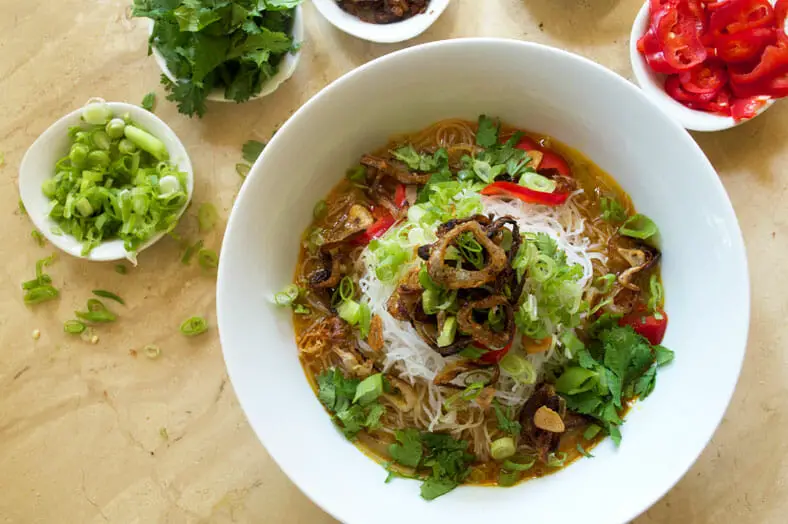
So yes, we did take some liberties here with our mohinga recipe, but therein lies the beauty of this recipe. Even with the changes made, the versatility of the recipe allows it to accommodate for all sorts of tweaks while still yielding a delightful, complex flavored dish.
Enjoy!
What would you put in your mohinga? Comment below!


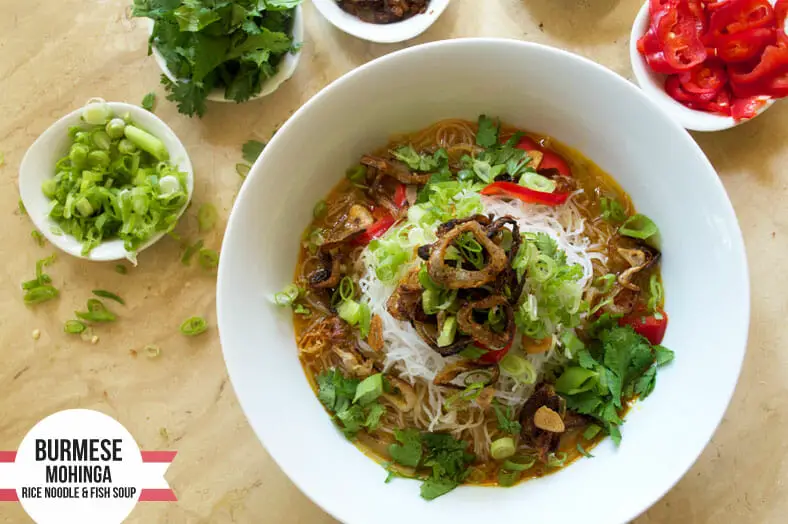
What an incredible soup – like pho, it can so in so many directions. I love your version. It still seems exotic but not so difficult to procure the necessary ingredients. (Where would I get banana stems?) But what did you mean by MS. Riehl’s step of “blitzing” the fish?
That’s exactly the appeal of this dish, Laura.. Minus the banana stems (which we had trouble finding ourselves), you can find all these ingredients pretty much anywhere you look.
In Ms. Riehl’s recipe, she suggests to blend the fish at the end of the recipe prior to serving after it’s cooked in the broth for some additional time. At least given the fish that we used in this recipe, we didn’t think the step was all that necessary, which is why we got rid of it